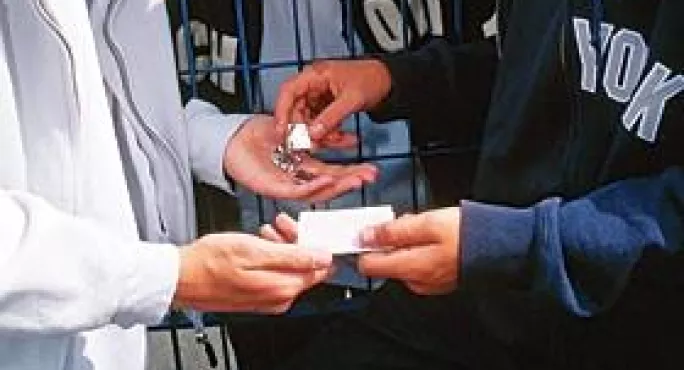Random testing boosts harder drugs use

Random drug testing in schools may be pushing students away from marijuana and on to harder substances that are more difficult to detect, research has found.
Using data from more than 150,000 high school students (aged 14-18) at more than 1,400 US schools, researchers found that institutions that ran random drug tests saw marijuana use decrease but the use of other drugs rise significantly.
About 28 per cent of American high school students are now subject to drug testing. In recent years, the introduction of drug testing has been suggested by governments in countries including the UK, Australia and Sweden.
“I think school leaders should realise that drug testing does not have a simple association with student drug use,” said Yvonne Terry-McElrath, from the University of Michigan’s Institute for Social Research, one of the authors of the study.
“It is likely that a drug-testing programme would associate with some degree of decrease in marijuana use but also with some degree of increase in use of other illicit drugs,” she said. “It is clear that drug testing is not providing the solution for substance-use prevention that its advocates claim.”
At schools where all students were subject to random testing, the research found that the probability that a teenager had used marijuana in the past 30 days fell from just over 25 per cent to less than 21 per cent. But the chance of their having used other drugs rose from just under 14 per cent to over 16 per cent.
Researchers said that students may know that traces of marijuana remain in the body for longer than most other drugs, so they may choose substances that are less likely to be detected or that are not included in the tests.
In the UK, former prime minister Tony Blair called for the introduction of random testing in 2004, but education officials have not pursued the idea, trialled in a pilot programme.
The trial was led by Peter Walker, who introduced the first state-school drug tests at the Abbey School in Kent, where he was headteacher at the time. Mr Walker dismissed the latest study and called for random testing to be introduced. He criticised the UK Department for Education for leaving his guidelines on testing in schools “on the shelf”, saying that opposition to testing is based on a fear of bad publicity.
“The biggest problem we have with drug testing is that headteachers know, if you start a testing programme, people will turn around and say that school has a drug problem,” he said. “But I’ve always been a believer in prevention rather than harm reduction or cure. Harm reduction costs a lot more than prevention and cure costs even more.”
Drug testing is widely used in the private school sector in the UK. A 1999 report by the Headmasters’ and Headmistresses’ Conference, which represents more than 250 leading private day and boarding schools, estimated that 75 per cent of boarding schools used drug testing, but not at random.
Tony Little, headmaster of Eton College, told TES: “We don’t use random tests because it undermines trust in the community, in the same way we don’t use CCTV to spy on students.” But he said that testing for students under suspicion of using drugs, instead of moving directly to punitive measures, had encouraged other students to report their concerns about classmates.
Meanwhile, a year-long study in Australia found that testing 10 per cent of children three times a year would cost AU$110 million (pound;72 million). Officials decided to reject the measure, saying that there was too little evidence of its effectiveness and widespread public opposition.
But the increase in drug testing of younger students in the US was highlighted in 2011, when two parents sued the Delaware Valley School District in Pennsylvania for forcing their daughters, one of whom was 12, to agree to drug testing in order to play school sports and take part in extracurricular activities. They argued that it was an unnecessary invasion of privacy.
A study of drug testing in New Jersey middle schools last month suggests that they have a point. It found that in a normal year, no 11- to 14-year- olds tested positive for alcohol or drugs. Moreover, the programme had no impact on the likelihood that a student would take drugs.
“It may be asking too much of adolescents to think of potential long-term consequences of behaviour when they are faced with peer pressure or immediate gratification,” the researchers said. The key factors in drug use were students’ perceptions of whether peers were using drugs and their belief that such substances were not a health threat.
Use and abuse
The US researchers examined data from 157,400 high school students and 89,575 middle school students over 14 years.
28% - Proportion of high school students who attended schools that used testing.
14% - Proportion of middle school students who attended schools that used testing.
3-4% - Decrease in marijuana use associated with random testing.
1-2% - Increase in other drug use.
23% - Estimated proportion of 17- to 18-year-old students who had used marijuana (9 per cent had used other drugs).
Photo credit: Alamy
Original headline: Random testing has side-effect of boosting use of harder drugs
Keep reading for just £1 per month
You've reached your limit of free articles this month. Subscribe for £1 per month for three months and get:
- Unlimited access to all Tes magazine content
- Exclusive subscriber-only stories
- Award-winning email newsletters


